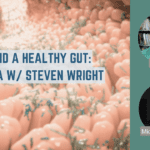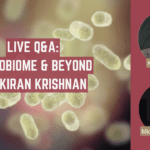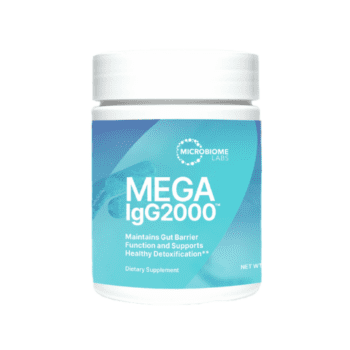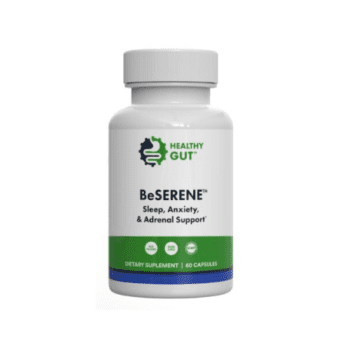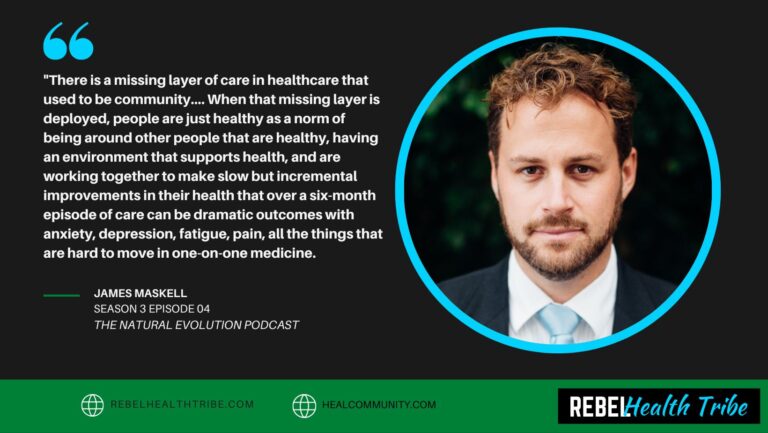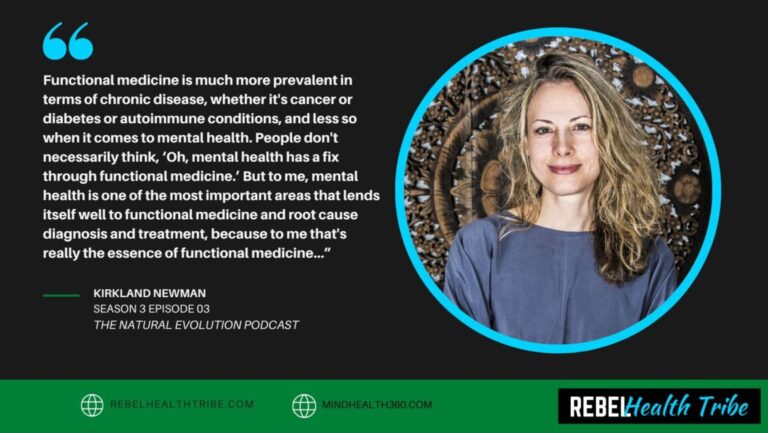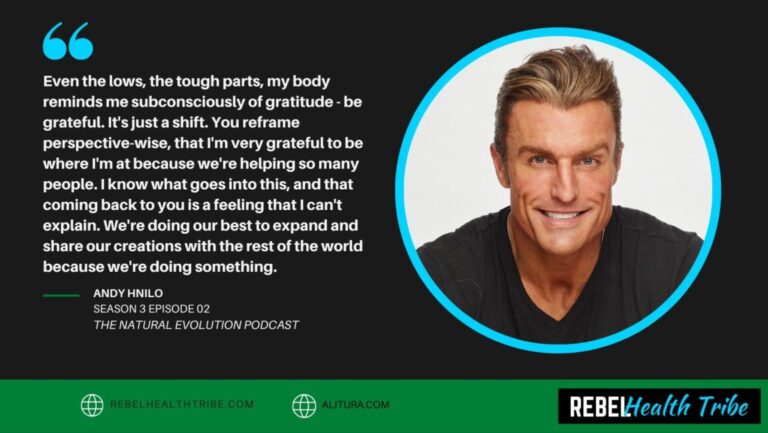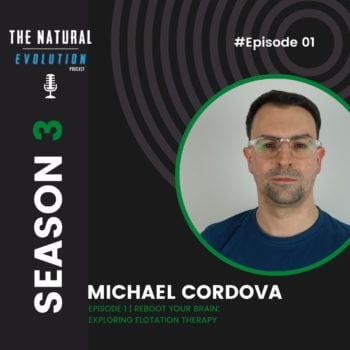
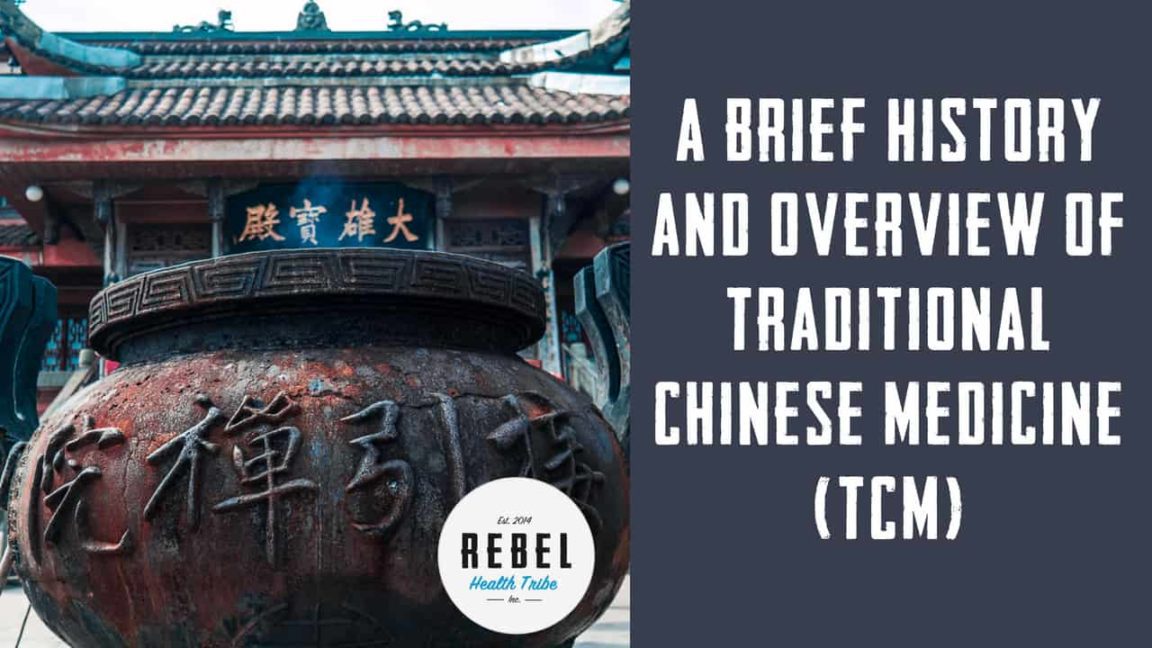
More Posts from
Foundations & Optimization
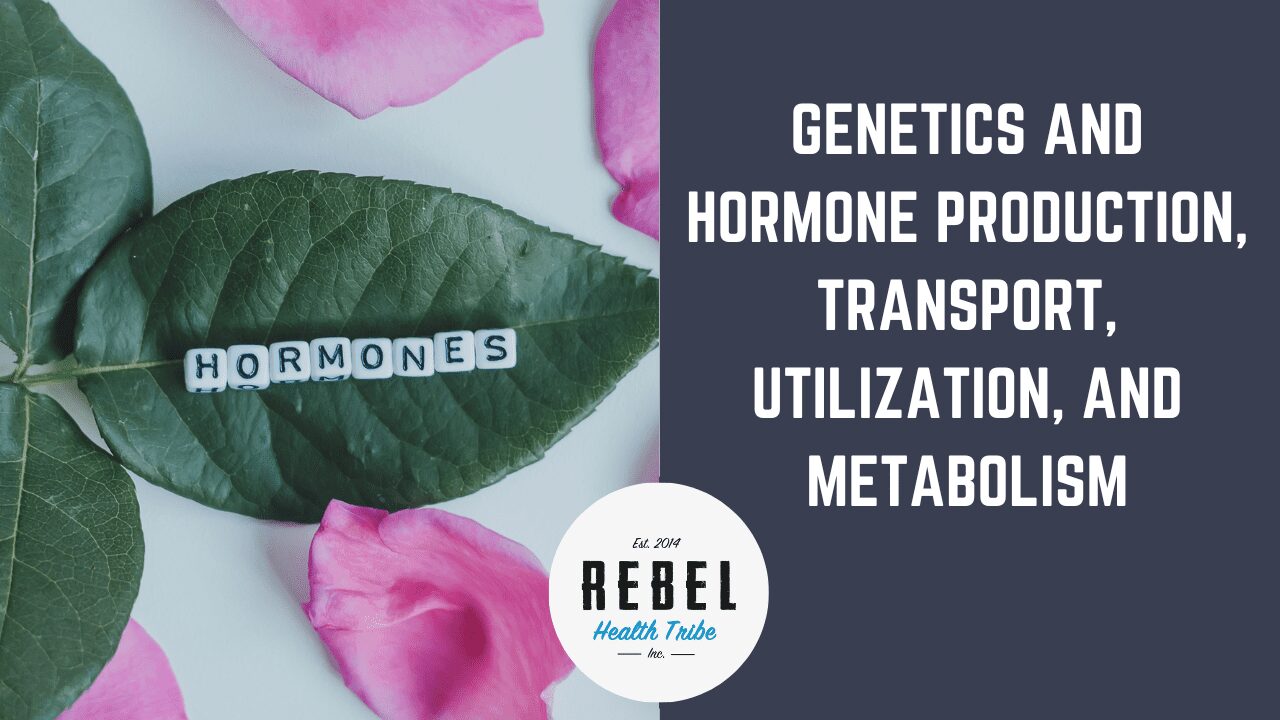
Genetics and Hormone Production, Transport, Utilization, and Metabolism
Our genetics play a larger role in our hormones than most people
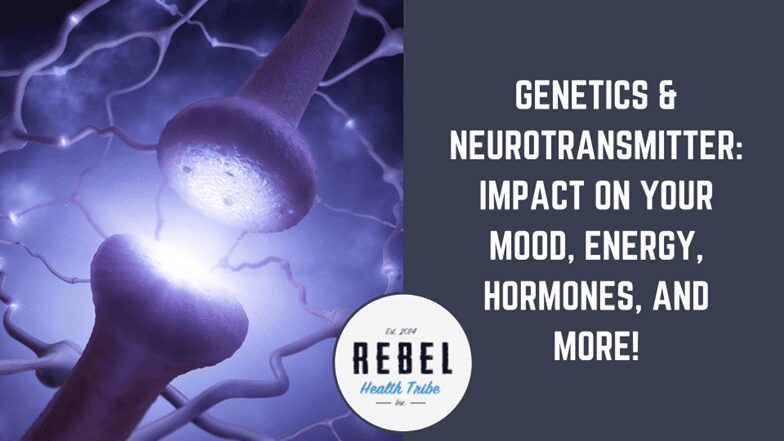
Genetics & Neurotransmitters: Impact on Your Mood, Energy, Hormones, and More!
Have you wondered why an antidepressant didn’t work for you? Have you
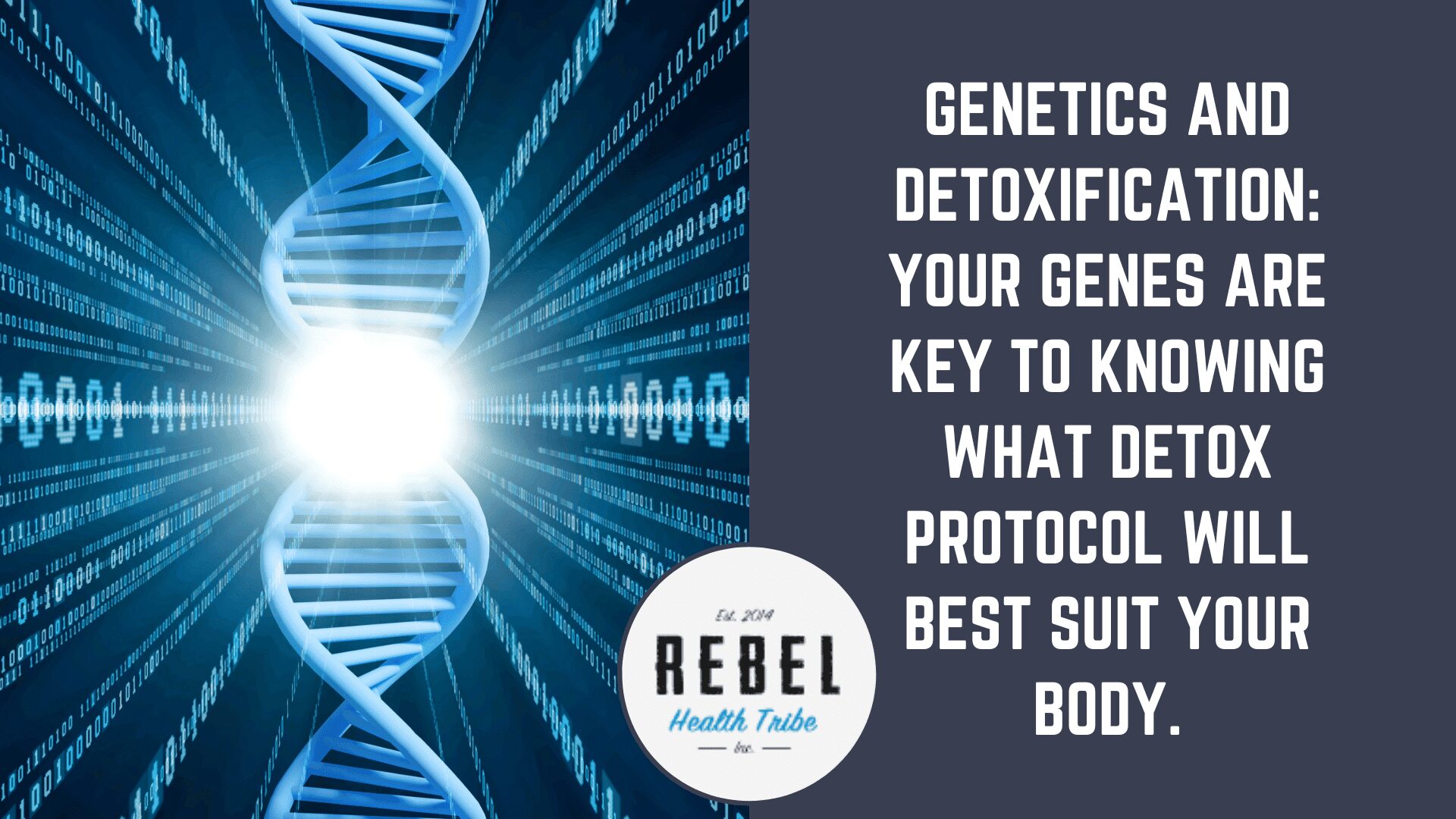
Genetics and Detoxification: Your genes are key to knowing what detox protocol will best suit your body.
https://vimeo.com/821487331 If you’ve ever bought a detox kit off a shelf

RHT Health Foundations &
Optimization Guide
Our Top Recommendations in One Simple Guide -
Your Starting Point for Optimal Health!
- 12+ years of research and experience distilled down into one simple guide
- Easy, practical, and actionable steps you can take right away
- The most-repeated recommendations from our 100+ guest experts over the years
- Something for everyone - regardless of where you are on your health journey
There is a lot to be learned from Traditional Chinese Medicine (TCM), it is a system that has survived for nearly 2,000 years because it works. It will continue to survive and, in fact, thrive as we apply science and rigor to it and discover that there is a great deal of wisdom in a system which has long held that the mind, body and spirit are all integral to health and well being
Unfortunately, many people are ignorant of Traditional Chinese Medicine and dismiss it as useless and ineffective “folk medicine”. This article provides a brief overview of the history and efficacy of this amazing medical practice and may help dispel some common myths and misconceptions about it.
Traditional Chinese Medicine (TCM)
One problem with evaluating TCM and comparing it to Western medicine is that it isn’t a single modality, it is made up of many different healing practices. Advocates of TCM who say that it can not be evaluated through “Western” judgment do so because TCM is based on a different paradigm and because there are inherent problems with applying the standard placebo and double blind approach to a methodology that, essentially, views each person as a unique individual whose treatment is designed for his or her specific set of circumstances.
In addition, we need to find an acceptable and uniform way of creating a double blind for acupuncture (laser acupuncture shows promise in this area). Most studies to date have different types of placebo, varying controls and are usually single blinded.
TCM is also difficult to evaluate because it is composed of a rather broad group of modalities which include herbal therapy, acupuncture and moxabustion, physical medicine (termed tui na, forms of massage and manipulation), dietary therapy, lifestyle modification and qi gong therapy, all of which may be prescribed to a patient.
TCM can and should be evaluated using science and rigor just as any other treatment modality. The question is, how to do this in a context that recognizes that diet, lifestyle and emotional factors are an integral part of the etiology of disease.
Historical Development
TCM, like western medicine, developed in a feudal culture(1). Hippocrates, Galen and the other progenitors of western medical thought did not have more freedoms than their respective Chinese counterparts. Zhang Zhong-Jing(2), Sun Si Miao, Wu You Ke, Ye Tian Shi(3)and many others enjoyed the support of the Chinese court.
Indeed, the government was quite generous in fostering Chinese medical ideas and was responsible for organizing, gathering, and developing many of its theories and concepts as early as 500 AD(4).
Based On Observation
Chinese medicine is based on observation, just as western medicine. Observations of the natural world and cosmos were used as analogies for explaining physiological function. It was recognized that what was found in the macro-cosmos was also true in the micro-cosmos of the human body.
In much the same way that physics now recognizes that phenomena on the microscopic level is, in many ways, similar to phenomena which takes place in the larger universe. In fact, many of the concepts of the ancient Taoists (the philosophical fathers of TCM) have been embraced by modern quantum physicists because of their unique insights into the nature of physical phenomena(5).
Looking at Disease
Diseases were recognized and described. However, the focus was not on the organization and classification of disease, instead Chinese medicine has chosen to organize and classify patterns of physiological dysfunction.
This was done because it was recognized that everyone who has cancer, hepatitis or any other disease may not have the exact same symptoms. This is true for a variety of reasons; not everyone is diagnosed at the same level of progression of their particular disease, not every illness travels the same linear path of development and not every person has the same strength of immunity.
Instead, in Chinese medicine, the study of disease was focused on how their particular disorder had compromised physiological function. This was a valuable insight because this system allowed doctors to treat diseases far more effectively with the tools that they had at that time.
Treatment in Chinese medicine is focused on restoring natural physiological balance which, inherently, involves proper function. This concept is referred to as “zheng”.
French physiologist, Claude Bernard(1813-1878) had a similar concept, believing that health was the result of maintaining a proper internal environment or milieu interieur. Walter Cannon, an American physiologist (1871-1945), was the first to define these same ideas and he coined the term “homeostasis”.
Anatomy and Physiology
TCM has a rather sophisticated understanding of physiology, biochemistry, organ function, heredity and infectious disease. The Yellow Emperor’s Classic complied between 600 and 300 BCE explains the basic concepts of physiology(6). It provides surprisingly accurate and detailed information on the human body, with some ideas clearly equivalent to modern western physiology.
Biochemistry was not described in western terms but examination of any modern Materia Medica will demonstrate that the pharmacology of Chinese herbs are clearly used with an in depth understanding of biochemical processes and it is not difficult to ascertain that different classes of herbs are used to treat disease in much the same way that modern pharmaceutical drugs are used.
For example, herbs that “clear heat” have broad spectrum anti-viral and anti-bacterial properties and were first used in the treatment of epidemic diseases(7),herbs that are “yang tonics” have androgen-like effects(8), herbs that are “qi tonics” stimulate the development of immune cells(9), herbs that “move blood” have analgesic effects(10), etc.
Descriptions of the organs and detailed descriptions of organ function are found in the Chinese medical literature. In fact, all of the major organs were identified by the early Chinese including the kidneys, heart, lungs, liver and spleen, stomach, large and small intestines(11). The size and weight of all the internal organs were also measured and recorded by early Chinese physicians.
Measurement standards have changed over the centuries, however, relative measurements between values in the ancient texts do compare well to their modern counterparts(12).
The early Chinese also identified heredity. This is termed “jing” and is clearly described to be inherited from one’s mother and father. While not fully understanding the mechanism for the transmission of heredity they were able to describe its effects and even identified that it was responsible for birth defects(13).
Infectious Disease
Text: TCM has entire schools devoted to the treatment of infectious disease. In fact, two seminal texts, The Shan Han Lun, (On Cold Cold Damage) written by Zhang Zhong Jing (150-219 AD)(14) and the famous treatise, Wen Bing Xue (Warm Disease Theory) from the Qing Dynasty both offer explanations for the transmission,diagnosis and treatment of infectious diseases(15).
These are not identified by western disease names, but rather, by progression according to symptoms into consecutively deeper levels of severity of the disease(s) in the body.
Here again, we can see that the emphasis is not on names and categories, but rather on the effect of the pathogen on the physiology. And in many respects the name of the disease is immaterial, these texts were authored by physicians who needed solutions during epidemics and their interest was in saving lives.
In fact, in his preface to the Shan Han Lun, Zhang Zhong Jing (often called the Chinese Hippocrates) laments the fact that in 10 years 70% of the 200 members of his family were killed by this epidemic (now believed to be small pox)(16).
This was why he researched so diligently and compiled this text to share his clinical experience with his heirs. The diseases in these texts were treated with herbs and other substances that have broad spectrum anti-viral, anti-fungal and anti-bacterial properties.
Today, modern pharmacology has identified the efficacy of these treatments and many drugs have been developed based on these findings(17).
Diagnosis
Tongue and pulse diagnosis are not random. They are based on an understanding of and sensitivity to the body’s processes. The tongue reflects the health of one’s digestive function and internal relationships of other organs to the digestive system.
Just as in western medicine, the pulse reflects the health of one’s cardiovascular system and its relationship to other internal organs and processes. Both pulse and tongue reflect the body’s interior climate.
For example, a fast pulse (> 90 bpm) and a red tongue are indicative of “internal heat”. This can be caused by many factors, such as an infection or a diet high in sugar and caffeine.
Furthermore, pulse and tongue findings are never taken alone. They are always analyzed within the context of a complete medical history. Treatment in Chinese medicine is made considering a multiplicity of findings.
A Chinese medical practitioner does not treat solely on the findings of the pulse and tongue anymore than a western medical doctor treats solely based on his or her findings of heart rate and reflexes.
Acupuncture
It is true that acupuncture descended from various techniques, but these were formalized in the 2nd century, not the 19th and 20th centuries(18). The famous physician, Huangfu Mi, compiled information from a number of classical texts in his book, Systemic Classic of Acupuncture and Essentials of Points, Acupuncture and Moxibustion (256-260)(19).
This book consisted of 12 volumes with 128 chapters, including 349 acupuncture points and contained detailed information on theory, diagnosis, techniques and clinical applications of acupuncture in various branches of medicine(20).
Much of what we know today about acupuncture in the west came through Europe in the early 20th century. However, there is a great deal of debate as to whether or not the Europeans even understood the basic concepts of Chinese medicine.
The fullest early account of acupuncture was provided by Willem ten Rhijine, a physician for the Dutch East India Company in Java in 1683(21). He accurately described Chinese medicine as based on the circulation of blood and vital air (qi). He equated Chinese medical thought to some of the ideas of Hippocrates and Galen and, as a result, many of its actual ideas were discredited and ignored(22).
It was not until 1901 that Frenchman, George Soulie de Mourant went to China and became interested in the study of Chinese medicine. Soulie de Mourant had no formal training in medicine so his translations, which are the basis of all subsequent European understanding of acupuncture are based on his fanciful misconceptions of the basic ideas and concepts of Chinese medical thought(23).
Modern Research
Physicians in ancient China created a total medical system that has survived, largely unchanged, to this day. The emphasis of this system is on how diseases, disorders and imbalances disrupt proper physiological function. It is respected by many modern Chinese physicians, in fact, many hospitals in China have TCM departments(24).
Yes, 85% of Chinese medicine is scientific and an enormous amount of time, energy and research has been devoted to exploring the pharmacology of herbs used in treatment(25) , the effects of acupuncture on the nervous and cardiovascular systems(26) , the effects of diet on disease prevalence(27) and the efficacy of other practices such as Qi Gong and Tai Chi.
While the exact mechanisms of acupuncture are not yet know many efforts have suggested the underlying mechanisms by which needling the superficial body influences the internal organs and relieves pain. The first indications of the relationship between acupuncture stimulation and pain control was demonstrated when naloxone was shown to attenuate the analgesic effect of acupuncture(28).
Early studies involving morphine and electrical stimulation of the periaqueductal and periventricular gray areas of the midbrain suggested that acupuncture analgesia was mediated by descending inhibitory pathways(29).
In addition, many biologically active substances, including neurotransmitters, were identified in acupuncture analgesia(30). Candace Pert and Larry Ng, in 1980 published an article in Brain Research, showing that acupuncture stops pain by stimulating the release of endorphins into cerebrospinal fluid.
Finally, even functional magnetic resonance imaging (fMRI) studies have shown that acupuncture stimulates the central nervous system including major integration centers in the brain(31).
Several structures like mesencephalon, hypothalamus, nucleus accumbens and the limbic system are known to be involved in the analgesic mechanism of acupuncture(32).
Western medical thought is now beginning to embrace many of the concepts which are fundamental to Chinese medical theory. In fact, new emerging fields of medicine such as PNI (Psychoneuroimmunology) echo many of the basic concepts of ancient Chinese medical theory.
In particular, the notion that one can not separate the body, mind and emotional well being of a patient. There is nothing erroneous about the efficacy of TCM. On the contrary, it has real effects, works through specific mechanisms and these claims are verified by millions of people worldwide.
Marc Ryan, L.Ac. is an acupuncturist and herbalist and Hay House author who practices functional medicine. Using the ancient wisdom of Chinese medicine (the original functional medicine) and modern laboratory analysis, Marc prescribes diet, supplements and lifestyle modifications instead of just adding more pharmaceutical drugs.
He is one of the few people in the world who solely focuses on treating Hashimoto’s Thyroiditis and other thyroid related issues. If you’re interested in having a consultation with Marc, CLICK HERE and as a gift to Rebel Health Tribe members use this coupon code for 10% off (rebelgift).
References and Sources
- 1.Unschuld P. Medicine in China. A History of Ideas. Berkeley, Calif: University of California press; 1985
- 2.Mitchell C., Ye F., Wiseman N., Shang Han Lun, Brookline, Mass. Paradigm Publications, 1999
- 3.Min Wen J, Seifert G, Warm Disease Theory, Brookline, Mass. Paradigm Publications, 2000
- 4.Unschuld P. pages 154-188
- 5.Capra F, The Tao of Physics, Boston, Shambala Press 2000
- 6.Kendall, D. Dao of Chinese Medicine, Understanding an Ancient Healing Art, Oxford University Press, 2002,
pages 30-55 - 7.Chen, J and Chen T, Chinese Medical Herbology and Pharmacology, City of Industry, CA., Art of Medicine
Press, 2004, pg. 103 - 8.Ibid, pg. 878
- 9.Ibid, pg. 835
- 10.Ibid, pg. 609
- 11.Kendall, D. Dao of Chinese Medicine, pg. 36
- 12.Ibid, pg.46 Tables 3.5 and 3.6
- 13. Ni, M. The Yellow Emperor’s Classic of Medicine, Boston and London, Shambala Press 1995, pg. 111
- 14. Mitchell C., Ye F., Wiseman N., Shang Han Lun, pg. 3
- 15. Min Wen J., Seifert G., Warm Disease Theory, pg. 2-6
- 16. Mitchell C., Ye F., Wiseman N., Shang Han Lun, pg. 29
- 17. Chen J., Chen T, Chinese Medical Herbology and Pharmacology, 2004
- 18. Ni, M, The Yellow Emperor’s Classic of Medicine, page 184-197
- 19. Xinnong C., Chinese Acuopuncture and Moxibustion, Beijing, Foreign language Press, 1987, pg. 4
- 20. Ibid, pg. 4
- 21. Kendall D., Dao of Chinese Medicine, page 5
- 22. Ibid, pg. 6
- 23. Ibid, pg. 7
- 24.The author’s discussions with Chinese physicians from Cheng Du Province and Beijing.
Dr. Ming Dong Li, Dr. Wen Hua Bing - 25.Any search of Pubmed will yield plenty of studies.
- 26. Ditto
- 27. Campbell, C, The China Study, Dallas, Benbella Books, 2005 pg. 69-110
- 28. Chapman and Bendetti 1977, Chapman et al 1980, Mayer, Price and Rafi: 1977
- 29. Mayer et al, 1977
- 30. Han et al, 1980, Han and Terenius 1982
- 31. Cho et al; 1998, Fang and Hayes; 1999
- 32. Hsieh, J.C., Tu, C.H., Chen, F.P., Chen, M.C., Yeh, T.C.,Cheng, H.C., Wu, Y.T., Liu, R.S. and Ho,
L.T., Activation of the hypothalamus characterizes the acupuncture stimulation at the analgesic point in
humans: a positron emission tomography study, Neurosci. Lett., 307 (2001) 105–108
RHT Health Foundations &
Optimization Guide
Our Top Recommendations in One Simple Guide -
Your Starting Point for Optimal Health!
- 12+ years of research and experience distilled down into one simple guide
- Easy, practical, and actionable steps you can take right away
- The most-repeated recommendations from our 100+ guest experts over the years
- Something for everyone - regardless of where you are on your health journey
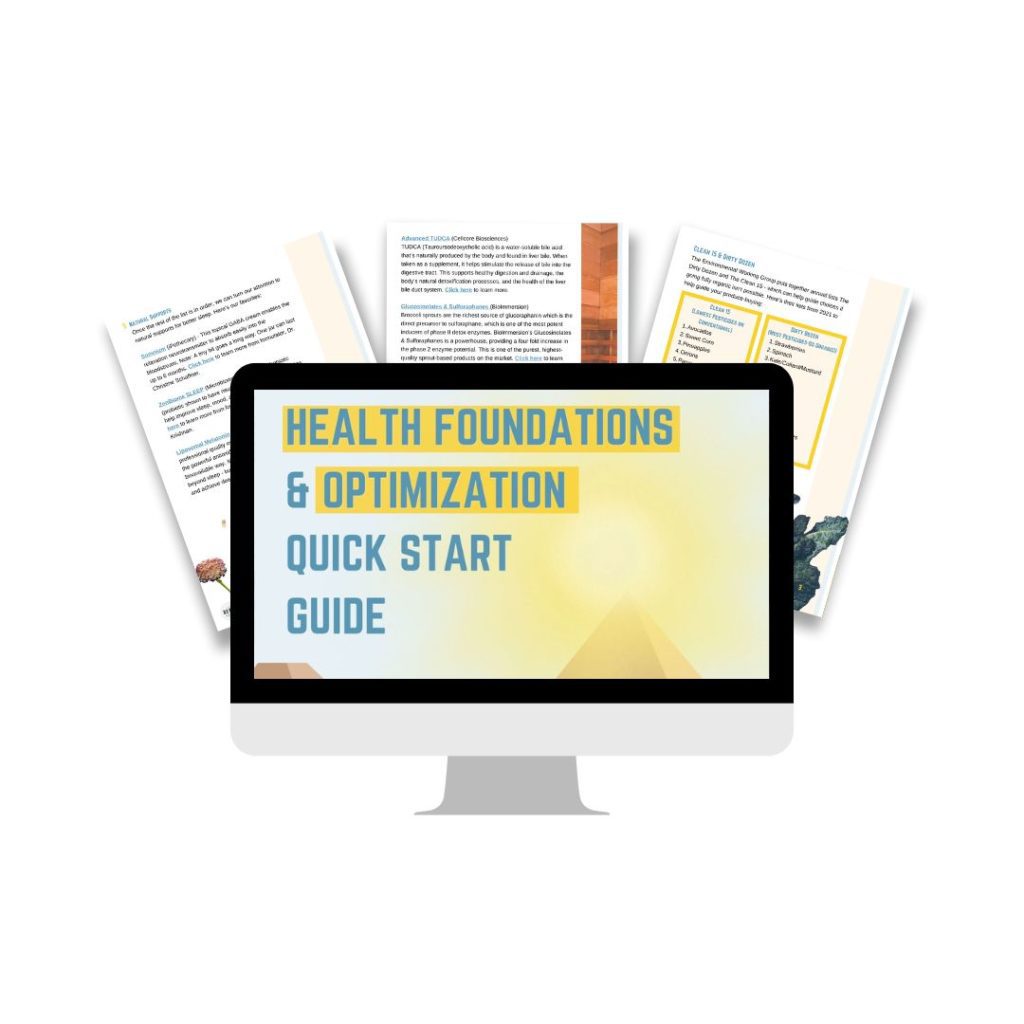
Foundations & Optimization Products
-
$49.00
-
$59.99
-
$49.00
Get Social
Recent Podcasts
Recent Courses
Toxicity & Detoxification Masterclass
The toxicity and Detoxification Masterclass covers a wide array of topics with the following guests: 1. Lara Adler, Environmental Toxins Educator 2. Andrea Nakayama, Functional Medicine Nutritionist 3. Maya Shetreat, MD 4. Jill Carnahan, MD 5. Jaclyn Downs, Functional NutriGenomics 6. Dr. Jared Seigler 7. Eric Gordon, MD 8. Jennifer Fugo, MS, CNS 9. Dr. […]
This content is only available to members.

5-Week Functional Neurology w/ Dr. Jared Seigler
Learn how to improve your brain health and function with this Functional Neurology course from Dr. Jared Seigler.
Dr. Seigler is a Certified Functional Medicine Provider with over 450 hours of Functional Neurology training focused on bringing awareness to the healing potential of the human body. He has trained over 300 clinicians in functional medicine and functional neurology, and now you can learn directly from Dr. Seigler yourself!
Brain & Nervous System Masterclass
16 Leading Experts Share Cutting-Edge Science, Effective Practices, and Clinical Strategies to Optimize Brain & Nervous System Health in Kids and Adults
Wellness Optimization Series
Learn about the immune system and what you can do to optimize wellness. This series provides valuable information on how an individual can be proactive during a time of crisis
Get the RHT Newsletter
Be the first to get access to special offers, new podcasts, courses, products and events from Rebel Health Tribe.
MegaSporeBiotic™
MegaSporeBiotic is a probiotic blend of 5 Bacillus spores that have been shown to maintain healthy gut barrier and immune function.
Facebook
Twitter
Pinterest
LinkedIn
Reddit
WhatsApp
Telegram
StumbleUpon
Marc Ryan
My name is Marc Ryan, I have Hashimoto’s, my daughter has Hashimoto’s and my entire practice is devoted to studying, researching, treating and helping people recover from this disease. I’m also a graduate of Cornell University and a licensed acupuncturist and herbalist who practices functional medicine. If you don’t know, this is a marriage of Western diagnostic testing and natural medicine. I’ve been in practice for about 13 years and I have an amazing life today.
View All Author Posts


